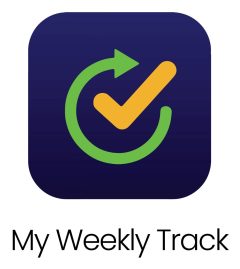Performance management has long been a challenge for organizations. Many rely on quarterly or annual reviews to measure how staff are doing, but these reviews often come too late to correct problems or recognize effort. In today’s competitive environment, organizations need performance tools that keep everyone aligned, accountable, and motivated.
That’s where weekly task tracking comes in.
Why Traditional Performance Reviews Fall Short
Traditional evaluations typically happen once or twice a year. While they provide an overview, they have three major problems:
- Delayed feedback – Staff only learn months later whether their performance met expectations.
- Vague results – Annual reviews often summarize performance without highlighting weekly actions.
- Low motivation – Without frequent check-ins, staff lose momentum.
By the time issues are discovered, it’s often too late to fix them.
Weekly Tracking: A Smarter Approach
Weekly task tracking shifts the focus from distant goals to immediate actions. Instead of waiting months, staff log their tasks each week and update their progress. Supervisors review this in real time, offering approval, feedback, or adjustments.
This approach creates a rhythm of continuous accountability. Staff know that each week counts, supervisors stay connected, and organizations collect real performance data over time.
Benefits of Weekly Performance Tracking
- Clarity for Staff
Every week, staff know exactly what is expected. Tasks are logged with clear statuses: Not Started, In Progress, or Done. This removes guesswork and creates structure. - Proactive Supervision
Supervisors no longer wait months to notice gaps. If tasks are falling behind, they can step in immediately, offer support, or redirect efforts. - Reliable Performance Data
Weekly data builds up into rich monthly, quarterly, and yearly reports. Instead of relying on memory or one-off assessments, organizations can measure performance trends with accuracy. - Motivation Through Progress
Seeing tasks move from “Not Started” to “Done” creates a sense of achievement. Staff are motivated by visible progress, and teams celebrate small wins together.
Turning Weekly Data into Big-Picture Insights
Weekly updates don’t just benefit individuals—they strengthen the entire organization.
- Monthly summaries show completion rates across departments.
- Quarterly reports help managers evaluate team efficiency.
- Annual performance reviews become evidence-based, highlighting real trends rather than vague impressions.
This data-driven approach helps organizations identify strengths, areas of improvement, and opportunities for training or support.
Building a Culture of Continuous Improvement
The greatest value of weekly task tracking isn’t just the reports—it’s the culture it creates. When staff log their progress regularly, and supervisors give feedback in real time, organizations build a workplace that thrives on accountability, transparency, and collaboration.
Instead of performance being a dreaded, once-a-year conversation, it becomes part of the daily workflow—natural, constructive, and motivating.
Conclusion
Performance isn’t just about numbers—it’s about consistent effort that leads to meaningful results. By adopting a weekly tracking system, organizations can align staff, empower supervisors, and make smarter, data-driven decisions.
Big goals are achieved one week at a time.




